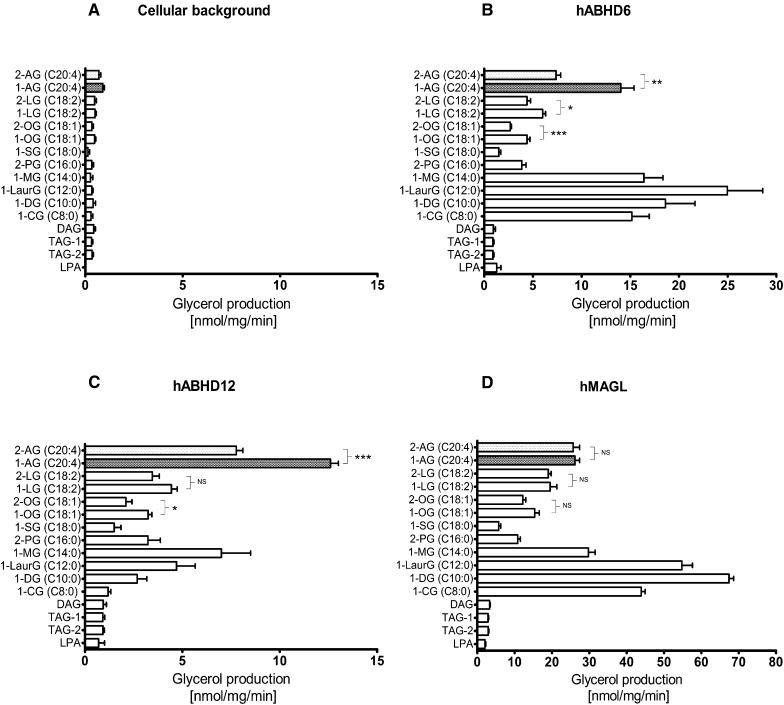Fig. 2.
Substrate profiles of the human endocannabinoid hydrolases. HEK293 cells were transiently transfected with the cDNAs encoding hMAGL, hABHD6, or hABHD12 as detailed in Materials and Methods. After 48 h, cells were harvested, and lysates were prepared for hydrolase activity measurements using a sensitive fluorescent glycerol assay as described in Fig. 1. The substrate panel included MAGs with the indicated acyl chain length, isomer and degree of saturation, one DAG 1,2-dioleoyl(C18:1)-rac-glycerol, two triacylglycerols (TAG1, 1,2,3-trioleoyl(C18:1)glycerol; TAG2, 1-palmitoyl(C16:0)-2-oleoyl(C18:1)-3-linoleoyl(C18:2)-rac-glycerol, and LPA. Cellular lysates (0.3 µg/well) were incubated together with the indicated substrates (25 µM final concentration, added from 10 mM stock solutions in ethanol into the glycerol assay mix containing 0.5% [w/v] BSA and 1% [v/v ethanol]). Glycerol production was determined at 90 min. a: Background activity for the tested substrates. Cellular background was similar between HEK and mock-transfected cells (data not shown). b: Substrate profile of hABHD6. c: Substrate profile of hABHD12. d: Substrate profile of hMAGL. Data are mean + SEM from three to seven independent experiments using lysates of each enzyme from one transfection. Transfections were repeated independently four times (hABHD6 or hABHD12) or twice (hMAGL), and the relative profile for selected substrates (1-AG, 2-AG, 1-lauroyl-rac-glycerol [C14:0], and 1-myristoyl-rac-glycerol [C16:0]) was similar between different transfections (supplementary Fig. I). Statistical comparison between the MAG 1 (3)- and 2-isomers was done using a paired t-test (*P < 0.05; **P < 0.01; ***P < 0.001). The 1 (3)- and 2-isomers of MAG(C20:4) are highlighted in each panel.

